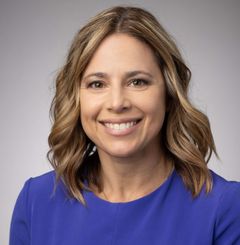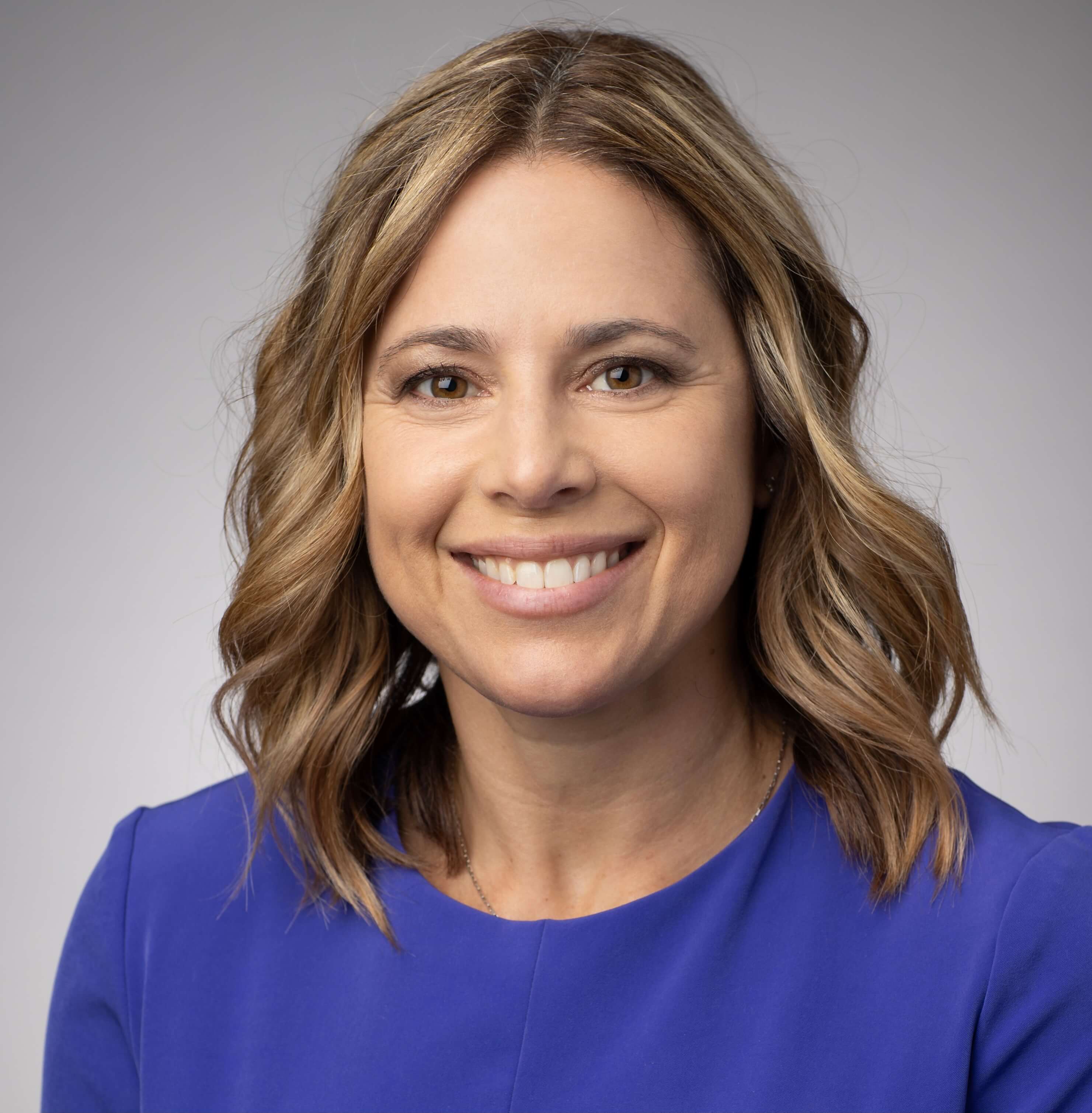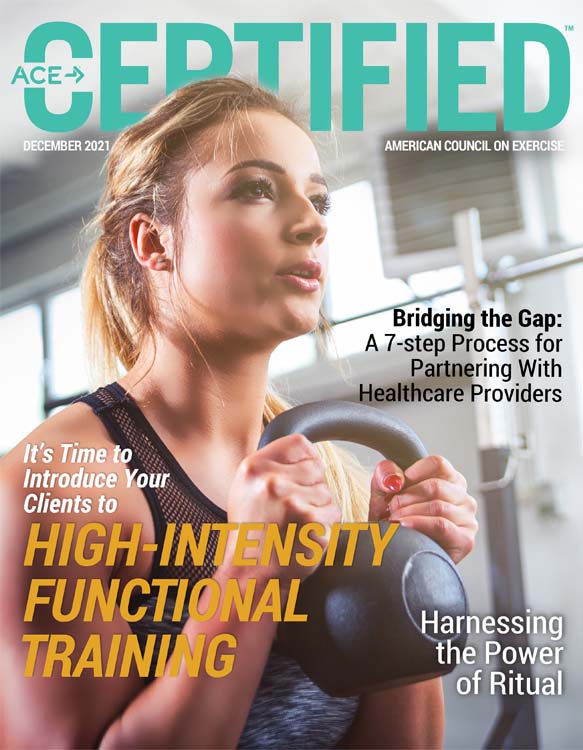
Like other health and exercise professionals, you may be interested in increasing your connection to the healthcare space as a community partner but haven’t yet figured out how to break into this space. When working with medical providers, showing your value or benefit is the secret to earning referrals. This article details how you can use the BENEFIT template to guide your way to success.

The Need is Great, But You Can Make a Difference
According to the Centers for Disease Control and Prevention (CDC), chronic diseases, which include heart disease, stroke, diabetes and cancer, account for a majority of the most common health problems in the United States. Obesity is also a known contributor to chronic disease, and is associated with many other health-related concerns such as pain, mental health conditions and decreased quality of life. The current obesity rate has continued to climb steadily and is currently at an all-time high of 42% in the US.
Chronic diseases are defined broadly as conditions that last one year or more and require ongoing medical attention, limit activities of daily living or both. Currently, an estimated six in 10 American adults have one chronic disease, and an estimated four in 10 have two or more.
Not surprisingly, these preventable chronic diseases are also the leading cause of disability and death in the US and add to rising healthcare costs. According to the CDC, 90% of our $3.8 trillion in annual healthcare expenditures is for people with chronic health conditions.
As a certified health and exercise professional, you can play a crucial role in the management, prevention and reduction of chronic disease and should be considered a vital part of the care team. Most of these chronic diseases are, at a minimum, preventable, as they’re linked to poor nutrition and lifestyle choices, such as inadequate physical activity, tobacco use and excessive alcohol use.
Chronic diseases are largely managed by medical providers, who frequently lack the time and resources to assist the patients they see each day when it comes to lifestyle changes. Primary care physicians report that while they understand the benefits of exercise, providing guidance beyond general recommendations is difficult, despite the general awareness that exercise is essential to good health.
These same providers are also trying to manage mental health concerns as part of their general care. Exercise can play a dual role in improving both physical and mental health. In a recent study of more than 1.2 million adults, exercise was significantly and meaningfully associated with self-reported improvement of mental health. Researchers found that individuals who exercised at a moderate intensity reported 43% fewer days of poor mental health.
Recent retrospective studies have provided solid evidence that meeting physical activity guidelines can improve a patient’s general mortality as well as reduce the risk of dying from a disease such as cancer. Unfortunately, while nearly every disease-related national organization (such as the American Heart Association, American Cancer Society, American Diabetes Association and countless others) recommends that every US adult meet the exercise guidelines for prevention or management of chronic disease, less than 20% of US adults are doing so on a regular basis.
Clearly, the need is great, and you are well-positioned to guide and support people who need to incorporate physical activity and other positive lifestyle habits more consistently and effectively into their lives. The BENEFIT framework outlined below is a stepwise process that you can follow to position yourself as an essential member of a patient’s healthcare team. (Note: ACE Certified Professionals can access a planning worksheet at the Bonus Tools like at the top of this article. This worksheet makes it easy to outline the BENEFIT process and help you identify next steps.)
Brand
Your brand is your starting framework. Begin by identifying an area of focus that interests you, such as a chronic condition or medical diagnosis, and identify three to five patient-reported concerns or conditions that a healthcare professional may see. Next, name ways that exercise may potentially help. These can be general or specific and don’t need to have clinical evidence just yet.
Draft out your ideas using both clinical and patient-friendly terms (e.g., oncology and cancer; diabetes and metabolic syndrome). While it’s not necessary to limit your impact to individuals who have these conditions, having a target will make it simpler to create your brand. The prevention of these diseases or conditions can also be part of your brand and may be a draw for potential clients.
Consider all aspects of your brand. Make sure you have established a professional presence online that includes pictures and images. Create a professional logo or hire someone to help you. A simple and professional website can also be easy and affordable. In addition, it’s a great idea to have a professional email that is separate from your personal email and used solely for business purposes. Develop your professional social media presence and use it as a space to connect and share.
Create professional materials that can be printed and/or emailed. Look into online resources that can help you develop marketing collateral, images for your website or social media. To create interest, include simple facts and statistics around the benefits of the services you offer. Make sure your brand is very clear and welcoming to potential clients who may be new or returning to exercise.
Most importantly, make contacting you simple and as easy as possible, and be sure to indicate where you offer in-person services. Create multiple ways for both providers and patients to get in touch with you. And when someone reaches out, respond quickly.
Education
Review your professional certifications and credentials. If you have not yet earned the ACE Health Coach certification, consider adding it to your education goals for the year, as this credential is ideal for working with a wide range of clientele, from those seeking weight loss to individuals newly diagnosed with a chronic condition such as diabetes. Additionally, look for learning or credentialing opportunities in the chronic disease space to further your skills and elevate your professional brand.
In addition to organizations related to the specific conditions in which you want to specialize, look for resources, organizations and individuals that focus on lifestyle medicine. Some examples include the National Coalition for Promoting Physical Activity, National Association of Physical Literacy, STOP Obesity Alliance and the American College of Lifestyle Medicine. Professional sites such as LinkedIn can also be a great source of information, as they often provide education such webinars or other streaming events. Don’t overlook the abundance of free resources available online in the form of podcasts, TED talks and YouTube videos. These can be great places to gather the facts and statistics that catch your eye and can help you develop your brand.
Education is an ongoing, lifelong process, so finding great places to start will be helpful for your time. In addition, these can be great places to network (see next step!)
Network
Once you have defined your brand and identified opportunities to expand your education, it’s time to start sharing what you’ve learned and have to offer. Networking can take place both in person and online. Rather than pursue high-level organizations or individuals, such as hospital administrators, look for professionals who are in complementary roles or would be interested in referring your services. And consider volunteering for disease-related organizations or elsewhere in your community by offering a free event or educational series, which can be a great way to gain exposure and beneficial experience.
If you or someone you know has had an experience with a specific health condition, start by connecting with the clinical care team with which you already have some experience. Ask for a small amount of their time, keeping in mind that 15 minutes is generally a much easier “yes” than an hour. As you begin to network, focus on sharing key evidence-based statistics or facts first. If you are networking through social media or email, keep these contacts brief and direct. It’s not necessary to share everything at once but be sure to emphasize the high points. Be prepared with content to share.
Expense
Because your services are unlikely to be covered by insurance, at least for the foreseeable future, emphasize the cost-savings benefits to the patient, medical provider and healthcare system. For example, becoming more physically active today may help individuals avoid thousands of dollars in healthcare costs later. According to a recent study of exercise and Medicare claims, people who start to exercise before or during middle age typically save between $824 and $1,874 annually on healthcare costs after retirement, and the earlier they start their workouts, the greater those savings can be.
As a health and exercise professional, you undoubtedly incur costs related to the delivery of your services, such as training space, travel expenses and gear. Whether you are a one-on-one trainer or group fitness instructor, deliver your services online or in person, it is important to invest in professional-level delivery platforms and spaces to enhance and bolster your appeal to both clients and referring professionals.
Fun
When it comes to physical activity, it is difficult to overstate the importance of fun. For both medical providers and their patients, most conversations are focused on topics of sickness, patient-related complaints or concerns and other more challenging topics. This is your opportunity to remind these individuals that exercise will help them feel better! Energy and attitude will not only increase your referrals, it is also attractive to individuals who simply want to feel better.
Invite
Invite your referring providers into your space (in person or online) to demo what you do and help them experience it (you may also want to extend this invitation to their nurses, partners, etc.). Offer to do a demo at their location if this is permitted.
Additionally, invite potential clients or community partners for a demo (again, either in person or online). Extend these invites through your social media channels and ask local organizations to share the opportunity as an extended benefit of what they offer their patients. If you ask someone to share an event for you, make it easy for them to say yes by providing a draft of the information so they know exactly what you’re offering.
Talk
Communicate regularly with your referring sources, but be sure to first ask how a given provider would like to receive feedback on their patients (e.g., via email, a phone call or a text message).
Remember that following up should be a continuation of your professional brand. For this reason, it may be worthwhile to develop a template that you can copy and paste, as this will make things easier over the long term. Share positive stories and outcomes of the patients you serve. Testimonials are an excellent way to increase your brand and create awareness of an experience that future clients will relate to.
In Conclusion
As a health and exercise professional, your skills and knowledge are essential to helping patients implement the recommendations made by their healthcare team. As you embark on what may be a new area for you, keep in mind that you are already skilled in the work. As you add the knowledge of a particular disease or condition to your skills, you will be building the much-needed bridge into healthcare and the benefits will be tremendous.
As you begin to implement the BENEFIT system, you may feel as though some aspects of this system will be easier for you than others, and you may feel uncertain or intimidated. Take care not to become discouraged. Much like starting a new exercise program, seeing results takes time and consistency, but your efforts will pay off over time.





 by
by 



